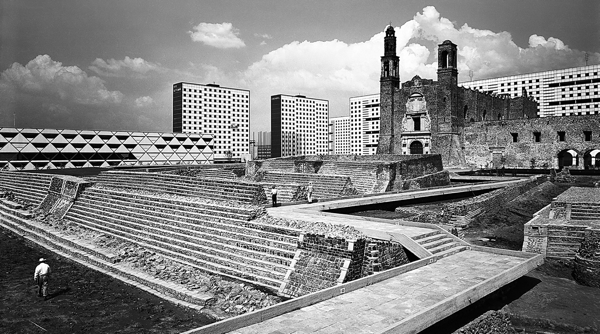Urban Fragments: The Americas

Meets Together with ARCH 409-004
From Buenos Aires to New York, the cities of the New World have been sites of speculation and experimentation, as idealized utopias, techno political dreams or revolutionary enclaves of resistance. The developmentalist policies of the post war and the totalitarian governments of the 1960s and 1970s led to political turmoil, rural migration, and uneven investment. We discuss the main cultural, economic, and political discourses that affected the Americas in the twentieth century and the responses or reactions they prompted in the urban and architectural realms. By comparing these responses as a series of case studies, the course assembles a modern history of North, Central, and South American cities as a network of shared and reciprocal influences. We begin by comparing the Law of Indies with the Manhattan grid, and tracing the influence of French urbanism in the National Mall at Washington, D.C. and the Avenida 9 de Julio in Buenos Aires. The grand scale of these axes, their iconic obelisks, and relationship to state monuments speaks to the nationalist politics embedded in these projects. We shift focus to the aerial view as trope for the distant gaze of the visitor—or the modern architect—, and confront the technological determinism of planning with the contingencies of urban growth. We follow the results of excess loans and state profligacy through a collection of "concrete elephants," from Caracas' Helicoide to the beleaguered Brutalist buildings of the United States. The role of public space as protest site brings together Mexico City's Plaza of Three Cultures and Washington D.C.'s Resurrection City. We problematize technology exchange in housing solutions by examining Soviet panels in Cuba and Chile, and the PREVI Housing project in Perú. The utopian communities of Open City in Valparaíso, Túpac Amaru in Jujuy, and Drop City in Colorado provide insights into alternative, more participatory narratives for cities. Finally, we discuss fences and borders by comparing the divisions between gated and segregated communities and states in San Diego and Tijuana, and the many real and implied borders in Detroit. Themes to be discussed include: the relationship between cities and oil dependency; developmentalism and governmentality; participation and utopia; segregation and borders. Readings include primary sources such as Law of Indies extracts, Le Corbusier's descriptions of South American cities, and Paulo Freire's writings on pedagogy, as well as recent scholarship by Alonso, Kahatt, and Liernur.
Intended Audience: Undergraduates interested in Architecture, Urban Design, Urban Planning, politics, and cities.
Class Format: Seminar
HISTART Distribution Requirements: D. Europe and the US, E. Latin America, 4. Modern and Contemporary